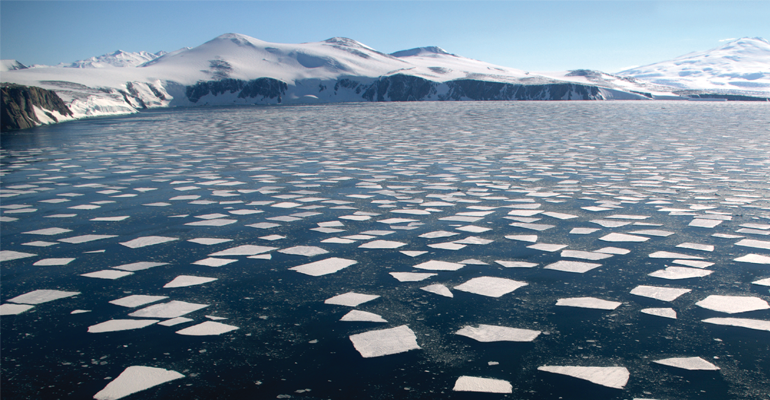September 25 2019
12pm-1pm
Location
Virtual hui | To participate via ZOOM, please register first by clicking the below link
DSC Seminar | How climate models deal with ice around Antarctica

We make decisions based on what we think will happen in the future, and where climate is concerned, these decisions often involve a cost. There’s a balance between the costs involved in preparing for future change now, and the cost of being unprepared for change when it arrives. To assess this balance and prepare effectively, we need to understand how reliable the evidence from climate models is.
For all climate models, finite computing resources mean that some physical processes have to be heavily simplified or excluded from the calculations. It’s important that we understand the effect this has on our projections for future climate so that we know what to expect, and whether or not it might be slightly different to what the models tell us.
In New Zealand, our climate is strongly influenced by things that happen in the Southern Ocean. One example of this is the increased rate at which ice is melting around Antarctica, which is generally not captured in climate models. Fresh melt water entering a salty ocean sits at the surface, preventing deeper, warmer water from cooling through contact with the atmosphere. This impacts ocean circulation, which is how most heat is transported around the planet. The melt also cools the ocean surface and drives sea ice formation. White, reflective sea ice, covering an otherwise dark ocean, changes the amount of solar energy received by the ocean (rather than reflected back into space), and so impacts the rate at which the Earth warms up. There are good reasons for not including the increasing melt rate, which Shona will explain in this seminar. Nevertheless, we are interested in the effect of the omission on climate projections. Understanding this will help us to better understand what changes to expect in future. Shona will explain why we’re concerned that the ice melt is speeding up, and present some of the ways in which ignoring it affects what we predict for future climate.
As computing resources expand, models are developed so that more processes are included, making climate projections more accurate. Until recently, most development has taken place in the northern hemisphere, and has focused on areas particularly important to future climate there. Years of making and analysing observations in Antarctica and the Southern Ocean have made New Zealand scientists world leaders in the region that is important to our climate here. We are using this expertise to improve the accuracy of our climate projections by including processes that we think make a difference to southern hemisphere climate. An example is the way that new sea ice forms around Antarctica every year. In most climate models, it forms more quickly and thinly than in reality, covering the ocean surface too soon, increasing its reflectivity and preventing the ocean from cooling. We are working to improve this by including a more realistic treatment of sea ice in the New Zealand Earth System Model.
About our presenter
Shona Mackie has a Physics MSci from Bristol University, an MSc in Glaciology from Aberystywyth University, and completed her PhD at Edinburgh University working with the UK Met Office on improving how we interpret satellite data for weather forecasts. She then moved into renewable energy consultancy, providing wind energy forecasts for utility companies and financial institutions. The eruption of Eyjafjallojokull volcano in 2010, and the chaos it brought to European air travel, brought Shona back to research to improve the way we detect, monitor and forecast volcanic ash in the air. Noting that climate change is probably the biggest threat to our society over the medium-to-long term, and how much we urgently need to understand in order to prepare for it, Shona saw an opportunity to contribute to the international research effort (and renew her interest in icy places). Two years ago, she moved with her husband to New Zealand to work at Otago University on sea ice and climate modelling.
Physical hubs:
- University of Otago: VC Room 312, Physics Department*
- NIWA Wellington: VC Conference Room
- NIWA Christchurch: VC TerraNova Room
- NIWA Lauder: VC Computer Room
- University of Canterbury: Meremere 411, School of Law Building
*Our presenter will be speaking from this hub.
Please note, all visitors to NIWA must sign in on arrival.
We encourage you to set up your own hub and bring colleagues together to participate in the seminar. Please let us know if you do set up your own hub and would like to test your VC facility prior to the seminar.
Email: [email protected]